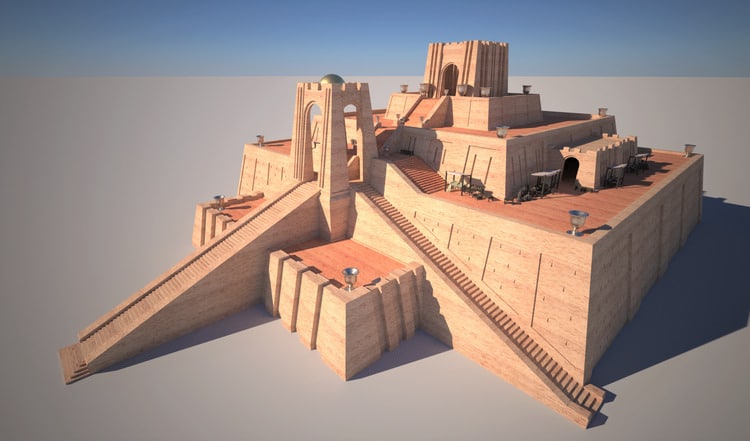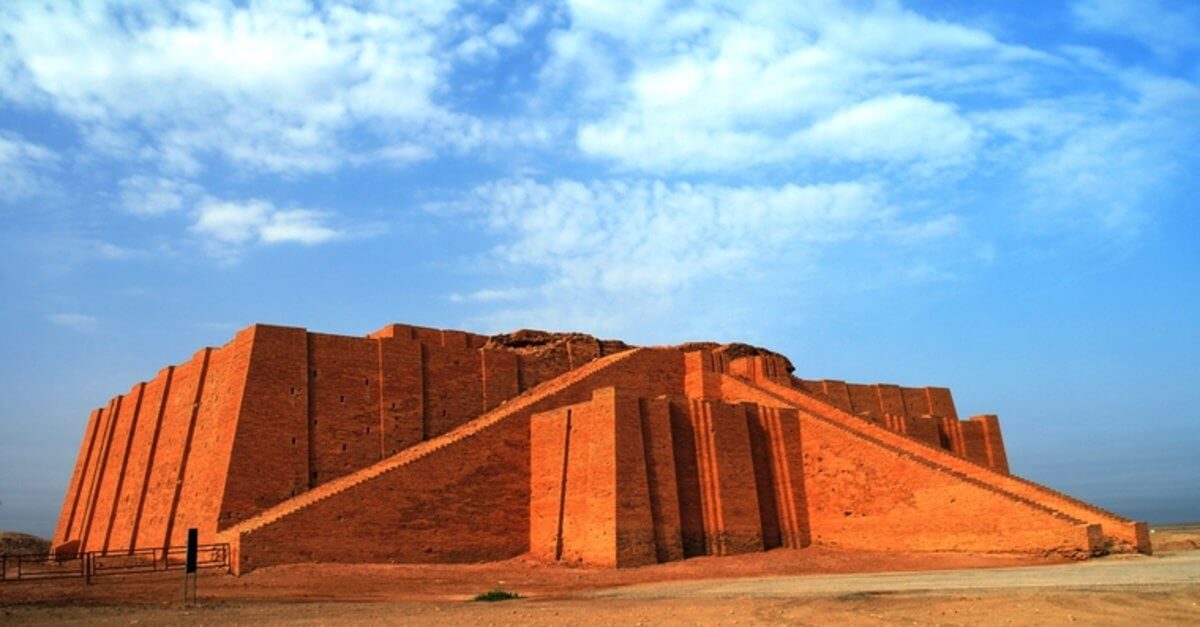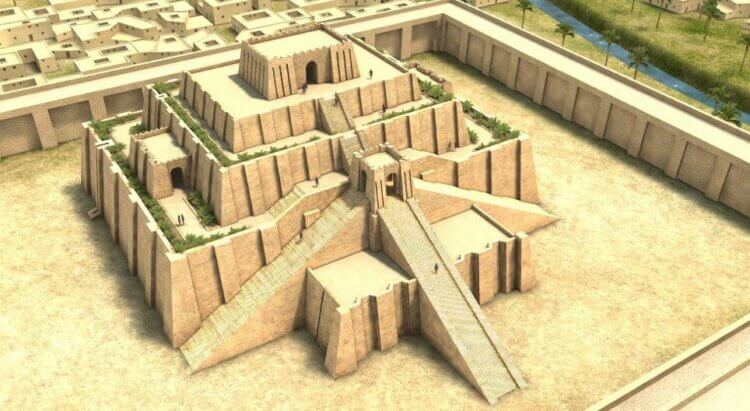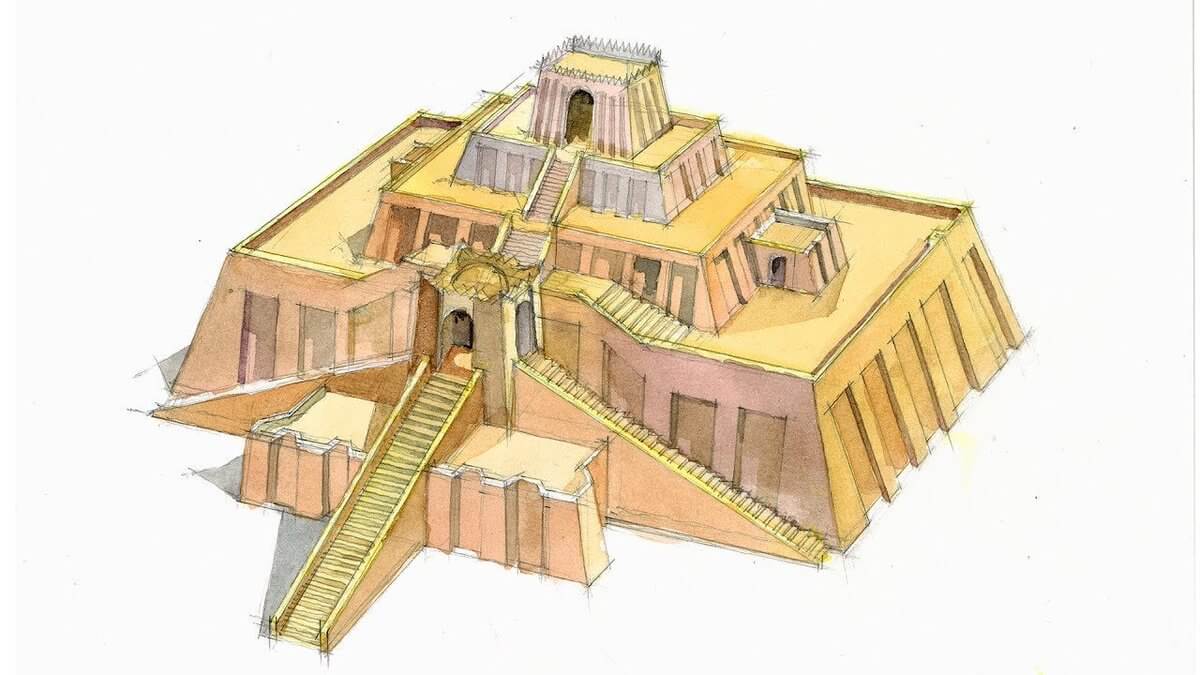
The Ziggurat is similar to the pyramids in Ancient Egypt. Although both were built in close proximity to each other, they are different structures. First of all, the reasons for the use of these two structures are different. In addition, their production processes are not similar. We have brought together what is curious about this structure with four sides.
Thought to have ascended to the kingdom of the gods, these wonderful structures have an interesting story and history. Let’s look at the answer to the question “What is Ziggurat?” and other curiosities together.
What is a Ziggurat? What are its features?

The Ziggurat, built in ancient Mesopotamia, is a type of stone structure that resembles pyramids and has different levels with terraces. Accessible only by stairs, this structure traditionally symbolizes the connection between the gods and the human species, but in practice it also serves as a flood protection. They can be found in cultures ranging from Mesopotamia to the Aztec to the Navajo Nation.
Like an ancient Egyptian pyramid, an ancient Near Eastern ziggurat has four sides. These structures are thought to have ascended to the kingdom of the gods. However, unlike the Egyptian pyramids, Ziggurats are not smooth on the outside.
It was layered to house the work that took place in the building, as well as the administrative surveillance and religious rituals necessary for Ancient Near Eastern cities. Ziggurats are found scattered across regions in what is today Iraq and Iran. They are an impressive testament to the strength and skill of the ancient culture in this region.
No ziggurat has been preserved at its original height. The best preserved ziggurat is at Ur (Tall al-Muqayyar, Iraq). The largest, at Choghā Zanbīl in Elam (in southwestern Iran), has a floor of 102 square meters and is 24 meters high. That’s less than half of its estimated original height. The legendary Tower of Babel is popularly associated with the ziggurat of the great temple of Marduk in Babylon.
What is the Ziggurat used for? Why was it built?

The ziggurat was the temple of the main god of the city. Every city in Mesopotamia had a primary god. For example, Murdock was the god of Babylon, Enki was the god of Eridu, and Ishtar was the goddess of Nineveh. The ziggurat indicated that the city was dedicated to that god. At the top of the ziggurat was a temple to the god. Priests performed many rituals here, such as sacrificing. Because they wanted the temple to be as close to the heavens as possible, they built them high.
The Greatest Ziggurat: Ziggurat at Ur

One of the largest and best preserved ziggurats in Mesopotamia is the great ziggurat at Ur. At the beginning of the twentieth century, small excavations were made in the area. In the 1920s, Sir Leonard Woolley worked with his team to uncover the entire monument in a joint project with the University of Pennsylvania Museum in Philadelphia and the British Museum in London.
What Woolley found was a massive 45×65-metre rectangular pyramidal structure oriented North, originally built with a three-level terrace measuring between 20×30 metres. A door on the first terrace floor is accessed by three monumental stairs. The core of the ziggurat is made of adobe covered with baked bricks laid with bitumen, a naturally occurring tar. About 720,000 baked bricks were used in the lower part of the ziggurat that supported the first terrace. The power and materials used to build this structure for that period are astounding.
Zigurat and the Moon Goddess Nanna in Ur

The Ziggurat at Ur and the temple on its hill were built around 2100 BC. It was made by Ur-Nammu, king of the Third Dynasty of Ur, for the moon god Nanna, the divine patron of the city-state. The structure was to be by far the highest point in the city and was designed like the tower of a medieval cathedral so that it could be seen from miles away. It has been the focus of both travelers and religious people.
Since the ziggurat supports the temple of the patron deity of the city of Ur, it is likely to be where the citizens of Ur would go to bring in agricultural surplus and receive their regular share of food. Visiting the ziggurat at Ur in ancient times was associated with seeking both spiritual and physical nourishment.
Clearly the most important part of the ziggurat at Ur was the temple of Nanna on top, but unfortunately this structure has not survived. Some blue glazed bricks were found, which archaeologists suspect may be part of the temple decoration. The surviving lower parts of the ziggurat contain incredible details of engineering and design. For example, since the unbaked adobe core of the temple would alternately be more or less humid depending on the season, the designers of the structure drilled holes in the baked outer layer of the temple to allow water to evaporate from the core. Additionally, drains were built on the terraces of the ziggurat to carry the winter rains.
Notable ziggurats are the Great Ziggurat of Ur near Nasiriyah, Iraq. Aqar Quf Ziggurat near Baghdad, Iraq; Etemenanki (destroyed) in Babylon; Chogha Zanbil in Khūzestān, Iran.
Interesting Facts About Zigaruts

- The height of the ziggurat is thought to be beneficial for protection from seasonal flooding.
- Only a few ramps lead to the top of the temple. This facilitated the protection of the higher orders and helped the priest keep their rituals secret if they wanted to.
- The Babylonian ziggurat was called Etemenanki. It means “Foundation of Heaven and Earth” in Sumerian.
- Early Egyptian pyramids are stepped pyramids very similar to ziggurats.
- The Mayans and Aztecs built stepped pyramids for their gods on a different continent thousands of years later.
This post is also available in: Türkçe Français Español Deutsch





Yorumlar (0) Add Comment